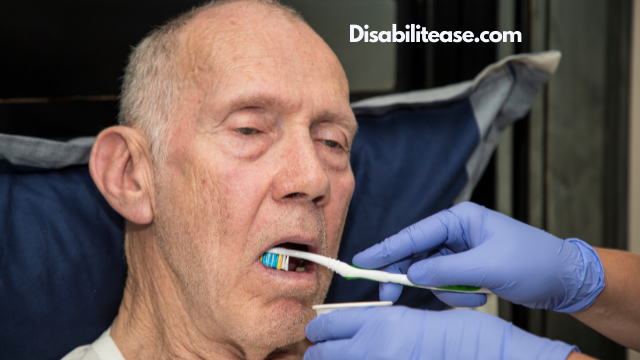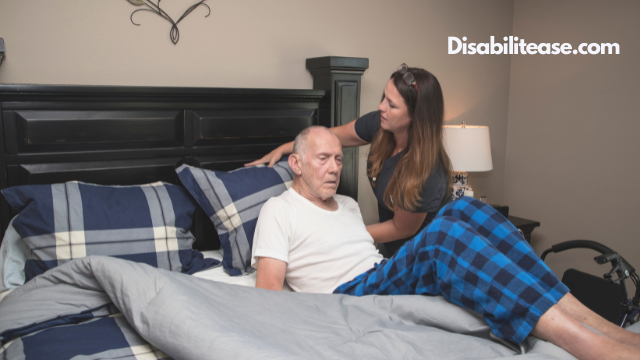How Can Parkinson’s Disease Be Treated? Let’s figure it out. Parkinson’s is the fastest-growing neurodegenerative disease worldwide. Affecting more than 10 million people, the disease is currently incurable. Treatments are primarily designed to help with symptom management and prevent life-threatening complications.

The standard treatment includes a combination of Levodopa, dopamine agonists, and dopamine-preserving medication. Treatments also vary by age, with a common classification of two subgroups; patients below 50 and above 50.
Here is a related article that might interest you on Which Is Worse: Parkinson’s And Huntington’s.
Once the condition reaches an advanced stage, other secondary treatments such as surgery and deep brain simulation can be used. Besides medication, lifestyle changes, physical therapy, speech therapy, and diet changes are also necessary in some cases.
Table of Contents
How Can Parkinson’s Disease Be Treated?
Common Drug Treatments
Drug treatments are often avoided until a moderate or severe case is suspected. Long-term use of common helpful drugs is strongly linked to serious side effects and further complications.
However, a combination of medication along with side-effects blocking drugs has made treatments safer for milder cases as well. Some of the frequently prescribed medications are explained below.
Levodopa
Levodopa is the most effective treatment currently present. Due to its fast action and high efficacy, the drug is often called the gold standard for Parkinson’s treatment. It mimics the chemical structure of Dopamine that is a natural chemical that Parkinson’s patients lack.
Dopamine is responsible for maintaining the cognitive and physical abilities and brain-to-muscle coordination needed to carry out most everyday tasks. The lack of Dopamine is the main cause of most tremors, shaking, and speech problems in affected individuals.
Levodopa releases this chemical within the brain and allows patients to remain independent in their personal and professional life. While it is the primary drug used in most cases of Parkinson’s, it loses its efficacy with progressing stages of the disease. When the brain starts losing more Dopamine, the drug often becomes insufficient to compensate for the excessive deficiency.
In such a case, other medications are combined with the drug to prolong its effects, sustain more Dopamine and prevent dopamine breakdown.
Common improvements resulting from Levodopa include less frequent jerky movements, shaking, tremors, muscle stiffness, and balancing problems. As it helps with cognitive abilities, too, you feel an improvement in your reasoning, problem-solving, and communication abilities as well. It also helps reduce the risk of injuries resulting from balancing problems such as falls which are common in advanced stages of the condition.
The medication is generally safe and does not cause serious side effects in the short term. Some common side effects during early use include nausea, vomiting, diarrhea, and dizziness.
Long-term use or high doses can result in frequent tremors, shaking, hallucinations, and confusion. While it can cause uncontrollable movements, many studies have found a strong link between heavy usage and sudden immobility as well.
Carbidopa
Carbidopa is essential for preventing the early release of Dopamine from Levodopa. To be effective, Levodopa must go through an intensive blood-brain barrier designed by the body to filter out chemicals that can and cannot reach the brain.
If Carbidopa is not present along Levodopa, it will result in the early release of Dopamine outside the brain. In most cases, some dopamine may be lost within the liver or gastrointestinal tract. The drug blocks this natural breakdown by blocking the enzyme responsible for converting Dopamine into other chemicals.
Doing this allows patients to feel more improvement with a smaller dosage of Levodopa. This also results in lower side effects, including a lower risk of severe vomiting, nausea, and sickness.
Dopamine Agonists
Dopamine agonists are similar to Levodopa and help with the same symptoms. Instead of releasing Dopamine, they mimic the chemical structure of Dopamine to provide the same improvements.
The drug is usually given along with Levodopa to prevent overreliance on just one drug and long-term side effects from high dosage. Common drugs include Mirapex, Requip, and Neupro. In cases of severe symptoms, the chemical can also be given in the form of an injection for quicker relief.
Compared to Levodopa, they have a longer-lasting effect and provide a more consistent improvement.
Due to the chemical similarity with Levodopa, the drug also causes similar symptoms, including nausea, vomiting, dizziness, and general weakness. Compared to other drugs, these symptoms usually become less severe and frequent with longer-term use.
However, long-term use can lead to other side effects, including insomnia, hypersexuality, binge eating, and compulsive behavior.
MAO B inhibitors
Within the brain, Dopamine is naturally broken down into other chemicals with the help of monoamine oxidase B (MAO B). This leads to less Dopamine being sustained by the brain.
Neurons, therefore, don’t get adequate time to react to Dopamine and maintain healthy functioning of the brain. MAO B inhibitors work by blocking this natural breakdown by inhibiting the responsible enzyme. Common brand names for MAO B inhibitors include Zelapar, Azilect, and Zadago. The medication is often given along with Levodopa and dopamine antagonists to prolong their effects.
Its short-term side effects include headaches, nausea, and insomnia. Prolonged use or high dosage can lead to more serious side effects, including hallucination, involuntary movements, confusion, and nightmares.
COMT Inhibitors
Besides the MAO B enzyme, there is another enzyme responsible for dopamine breakdown within the brain. Whereas MAO B leads to the breakdown of Dopamine within the brain, the COMT enzyme does the same before Dopamine even reaches the brain. This leads to less Dopamine being supplied to the brain in the first place.
Catechol-O-methyltransferase (COMT) is a natural enzyme in the brain that attacks Dopamine to release other chemicals within the bloodstream. COMT inhibitors prevent this attack by slowing down the activities carried out by the particular enzyme.
These result in a more consistent response to primary treatments such as Levodopa and Dopamine antagonists. Common medications include Tolcapone and Entacapone. However, these are only given in cases of severe fluctuation or lack of response to the main medication.
Diarrhea, nausea, vomiting and, sudden shaking, tremors are common side effects. Their prolonged use is strongly linked with the development of dyskinesias, a condition that causes excessive movement within the hands and legs.
Tolcapone comes with complicated side effects and is therefore rarely prescribed, even in moderate or severe cases. The medication can lead to irreversible, life-threatening liver damage.
Anticholinergic Medications
Anticholinergics are never a primary choice for treatment due to the severe side effects and other complications they can cause. These mainly help with muscle rigidity and tremors caused by decreasing dopamine levels. It is also more helpful in the more severe cases and is never prescribed for mere symptom management in early-onset Parkinson’s.
Anticholinergic drugs such as Biperiden, Cogentin, and Trihexyphenidyl reduce the excessive activity in Acetylcholine. Acetylcholine is a neurotransmitter responsible for creating nerve impulses. When dopamine levels drop too severely, acetylcholine’s effects become more powerful. Its hyperactivity leads to excessive, uncontrolled movement within the body, including shakes, tremors, and twitching. This can also lead to muscle rigidity and stiffness, where a patient might also go through involuntary pauses.
Any improvements from the drug are often offset by the various side effects it causes. Common side effects include blurred vision, hallucinations, constipation, urination problems, and dry mouth. Its long-term use is prohibited for older patients due to the severe CNS side effects it can cause.
Amantadine
It is the primary medication given during the early stages of Parkinson’s. The drug works by simulating more releases of Dopamine. As other medications are saved for the later stages to prevent long-term side effects, Amantadine helps reduce symptoms.
It is a simple antiviral medication and results in more controlled movements, lower tremors, shaking, and jerky movements. During the advanced stages, Levodopa and carbidopa can lead to counterintuitive effects, including excessive tremors and movements.
Amantadine is therefore also prescribed at these stages to control the side effects of other medication and prevent falls or balance-related injuries.
Its side effects usually manifest in the form of psychological and cognitive problems. These can include reduced alertness, confusion, excessive agitation, nightmares, and insomnia. It can also lead to skin problems and result in mottled skin, which usually looks purple.
Swelling in the legs and ankles is also a possibility with long-term use.
Gocovri
Also known as an anti-Parkinson’s agent, Gocovri is a recent drug that is growing in popularity for its management of side effects. The drug helps control common side effects such as involuntary movement, tremors, and shaking that arise due to long-term use of Levodopa, dopamine antagonists, and carbidopa.
These typically come in the form of extended-release capsules. This means they have long-lasting effects which curb the frequency of side effects throughout the day.
While it can help with most side effects related to muscle coordination and physical abilities, the drug is specifically designed to help with Dyskinesia.
Dyskinesia is a condition that is a common side effect present in almost all kinds of Parkinson’s drug treatments. Levodopa, Carbidopa, COMT Inhibitors, and Dopamine antagonists can all lead to the development of Dyskinesia and lead to further complications.
The condition leads to involuntary movement throughout the body, excessive shaking, and balancing problems. Falls are the most frequent cause of fatality in individuals with Parkinson’s. This makes Gocovri an essential medication for older adults who have been taking the primary drugs for a long time.
Even though it is designed to counter side effects, it comes with some mild side effects of its own. Common side effects include dry mouth, nausea, vomiting, constipation, and a reduced appetite.
Mottled skin, blurred vision, confusion, and irritability are also a possibility but are rarely present in most cases.
How Treatments Vary With Age
The main treatment choice for patients under 50 includes Amantadine, anticholinergic agents, and Selegiline.
The primary purpose of treatment for patients under the age of 60 includes management of symptoms and neuroprotection. Doctors typically avoid drugs such as Levodopa, Carbidopa, and Dopamine Antagonists for as long as possible to minimize long-term side effects.

Usage of primary drugs is typically started after the age of 50, most commonly around age 60. A more diverse combination of medication is also common at this stage. And patients are often prescribed antagonists in addition to Selegiline to properly control symptoms.
Levodopa and Carbidopa are only introduced when the condition doesn’t respond to dopamine antagonists and other mild medications. Moreover, only sustained-release Levodopa and carbidopa are prescribed at this stage, which needs to be taken at a lower frequency.
The previous medications from earlier stages— Amantadine, anticholinergic agents, and Selegiline are also not withdrawn.
The goals of treatment change once the patient is over the age of 60. At this stage, doctors will focus on minimizing functional impairment as much as possible.
Prevention of cognitive impairment becomes the main concern, and higher doses of primary medication are prescribed. Inadequate or no response to medication becomes frequent at this stage, and patients often need to test different drugs until the most suitable one is found.
Immediate-release medication replaces the sustained-release ones and needs to be taken either once or twice daily. Amantadine, anticholinergic agents, and Selegiline become dangerous at this stage due to their serious side effects and must be withdrawn completely.
Treatment for Advanced Stages of Parkinson’s
Most mild and moderate cases of Parkinson’s are successfully managed with the help of medication, injections, patches, and even physical therapy. However, as the disease progresses, the drugs become ineffective even at higher doses.
A common problem includes fluctuation in responses. Older patients will usually have “on” and “off” periods with medication where sometimes the drugs work and sometimes they don’t. This inconsistency often makes them dependent on external support as they face consistent flare-ups of symptoms.
To prevent these “Off” periods, a patient may be prescribed a more frequent dosage and re-introduce the drug before its first effect wears off.
Along with this, a combination of changes in medication and secondary and supplementary treatments may also not help at this point.
In such a case, the patient will be required to undergo surgery to maintain their independence and quality of life. Some common surgeries that can help with Parkinson’s are explained below.
Pallidotomy
Globus Pallidus is a specific part of the brain responsible for allowing movement throughout the body. Parkinson’s often leads to hyperactivity within this part, leading to sudden, uncontrollable movements.
Pallidotomy involves making a scar within this area to weaken it and reduce excessive activity. It is not recommended for mild, moderate, and even severe cases of Parkinson’s.
The surgery carries multiple risks of complications and is only conducted when patients don’t respond to the medication at all. Results typically include a reduction in tremors, shaking, muscle stiffness, and more control over movements overall.
Thalamotomy
Similar to the Globus Pallidus, another part of the brain, the Thalamus, is also responsible for movement control and becomes hyperactive under Parkinson’s. It can cause more severe cases of tremors which are considered disabling.
Thalamotomy is conducted to eliminate these tremors by destroying or scarring the Thalamus. However, other symptoms such as cognitive impairment, balancing problems, and muscle rigidity still remain.
Deep Brain Stimulation (DBS)
Deep brain stimulation targets the same parts of the brain as Pallidotomy and Thalamotomy; the Globus Pallidus and Thalamus. However, it is considered safer and less invasive. Instead of scarring the regions, it involves sending controlled electric impulses within them. These impulses carry movement control messages and help with suppressing tremors.
DBS offers a more controlled and personalized solution as the delivery of impulses can be started and stopped as needed. The process is not a one-time surgery but involves the implantation of electrodes within the brain.
These electrodes are attached to the thalamus or Globus Pallidus (whichever one is causing tremors) and can be activated through external control. Patients can use the controller to turn the electrodes on or off as needed.
Recent Developments in Advanced Parkinson’s Treatment
Other than surgery, scientists have found success in trials of some more effective and sustainable treatments. Stem cell therapy, Growth Factor therapy, and gene therapy are a few treatments that have proved their viability in treating many conditions that were previously considered irreversible. They are now becoming accessible in most developed countries for the treatment of Parkinson’s as well. Depending on the case, they can slow down, stop or even reverse the damage caused by Parkinson’s.
Stem Cell Therapy
Individuals with Parkinson’s suffer from damage to their brain cells responsible for creating Dopamine. Stem Cell therapy aims to replace these damaged brain cells with healthier copies.
These cells can help restore the previously compromised brain functions, lead to better muscle coordination and cognitive abilities and curb sudden movements. While still in progress, it has been approved in some parts of the world. Most individuals receive diagnosis many years after the development of the disease.
For this reason, slowing progress rarely helps, as most of the damage is already done. Stem Cell therapy will allow individuals at any stage of the disease to see improvement. However, it still remains inaccessible to many.
Gene Therapy
Individuals with Parkinson’s sustain a lot of damage to their nerve cells. This is the main cause of dopamine deficiency. Current medication can help with the recreation of Dopamine through artificial means but come with severe side effects.
Gene therapy can increase dopamine levels by targeting the specific areas within the brain that need it for healthy functioning. This will remove the need for medications such as Levodopa that need to move through the bloodstream to finally reach the brain.
Enzyme inhibitors for COMT and MAO B will also not be needed as Dopamine can be delivered directly to specific parts of the brain.
The treatment works by modifying the genetic instruction within the cells and directing them to become functional and recreate the lost protective factors. An alternative is replacing the faulty gene with a healthier copy which can reprogram the dysfunctional cells and change their destructive behavior.
Growth Factor Therapy
Growth factors are molecules responsible for the growth and development of various cells within the body. There are specific growth factors that can help nourish, repair, or revive the brain cells damaged by Parkinson’s. These factors include GDNF, BDNF, CDNF, and MANF.
They can act as catalysts for the growth of struggling brain cells and revive the previously lost brain functions. They can also stimulate the growth of new cells. However, the treatment is still under trial, and the challenge of delivering the right growth factor to the right brain region still remains.
Studies have found success in some cases, but the results remain inconsistent.
Conclusion
Being the fastest growing neurodegenerative condition, Parkinson’s has attracted more medical research than ever before. Researchers across the world are determined to find treatments that cannot only slow down but also reverse the damage.
Another post that will interest you is about the Best 8 Beds and Mattresses for Parkinson’s Patients in 2022.
Multiple successful trials for gene therapy and growth factors have already been conducted. While you wait for more potent treatments, it’s important to take the prescribed medication with full responsibility.
Despite being incurable, the disease is never fatal, and most people live for as long as other healthy people.

Hi, my name is Eddie, I am a professional trainer specializing in the elderly population and I’m also a website designer. I love training in the gym, going to the beach, traveling, and having good food.
I combined my love for sport and website designing to make “DisabilitEase” whose purpose is to help elderly and disabled people live a more full and active life, have more fun, and enjoy their unique journey despite any disability.




